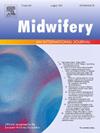差距的沙漠:社会脆弱性在产妇保健差距中的作用
IF 2.5
3区 医学
Q1 NURSING
引用次数: 0
摘要
目的探讨产妇保健荒漠与社会脆弱性的关系。研究设计评估了美国11个州的1084个县(2019-2021年)和CDC/ATSDR社会脆弱性指数(SVI, 2020年)。线性回归模型分析了社会脆弱性、产科服务提供者和未参保妇女之间的关系。结果ssvi对产妇护理沙漠分类无统计学影响(r = -0.050, p = 0.101)。然而,较高的SVI与较少的产科提供者(β = -0.524, p < 0.001)和较高的未参保率(β = 0.151, p < 0.001)相关。社会经济脆弱性(r = -0.143, p < 0.001)和家庭特征(r = -0.146, p < 0.001)与产妇保健机会减少有关,而种族和少数民族身份(r = 0.064, p = 0.036)和住房类型和交通(r = 0.165, p < 0.001)与产妇保健机会增加有关。在社会经济地位和家庭特征方面较为脆弱的国家,产科服务提供者较少,无保险妇女比例较高,这表明存在社会风险和医疗基础设施有限的双重负担。矛盾的是,在种族和少数民族地位、住房类型和交通方面更脆弱的县,产妇保健资源的可获得性更高,这表明,尽管不同社区的结果不佳,但它们拥有可用的医疗手段。结论我们的研究结果表明,产妇保健的障碍超出了资源可用性,需要努力解决系统障碍和公平的资源分配。本文章由计算机程序翻译,如有差异,请以英文原文为准。
Deserts of disparity: Social vulnerability’s role in maternity care gaps
Purpose
To determine the relationship between maternity care deserts and social vulnerability.
Study Design
1084 counties from the March of Dimes (2019–2021) and the CDC/ATSDR Social Vulnerability Index (SVI, 2020) across 11 U.S. states were assessed. Linear regression models analyzed the relationships between social vulnerability, obstetric providers, and uninsured women.
Results
SVI did not bear any statistical influence on maternity care desert classifications (r = -0.050, p = 0.101). However, higher SVI was correlated with fewer obstetric providers (β = -0.524, p < 0.001) and higher uninsured rates (β = 0.151, p < 0.001). Socioeconomic vulnerability (r = -0.143, p < 0.001) and household characteristics (r = -0.146, p < 0.001) were associated with reduced maternity care access, while racial and ethnic minority status (r = 0.064, p = 0.036) and housing type and transportation (r = 0.165, p < 0.001) were associated with greater access.
Discussion
Counties with greater vulnerability in socioeconomic status and household characteristics tended to have fewer obstetric providers available and higher proportions of uninsured women, indicating a double burden of social risk and limited medical infrastructure. Counties with greater vulnerability in racial and ethnic minority status and housing type and transportation were paradoxically associated with greater availability of maternity care resources, suggesting that despite diverse communities experiencing poor outcomes, they have the medical means available.
Conclusions
Our findings suggest that barriers to maternity care extend beyond resource availability, requiring efforts that address systemic barriers and equitable resource allocation.
求助全文
通过发布文献求助,成功后即可免费获取论文全文。
去求助
来源期刊

Midwifery
医学-护理
CiteScore
4.50
自引率
7.40%
发文量
221
审稿时长
13.4 weeks
期刊介绍:
Midwifery publishes the latest peer reviewed international research to inform the safety, quality, outcomes and experiences of pregnancy, birth and maternity care for childbearing women, their babies and families. The journal’s publications support midwives and maternity care providers to explore and develop their knowledge, skills and attitudes informed by best available evidence.
Midwifery provides an international, interdisciplinary forum for the publication, dissemination and discussion of advances in evidence, controversies and current research, and promotes continuing education through publication of systematic and other scholarly reviews and updates. Midwifery articles cover the cultural, clinical, psycho-social, sociological, epidemiological, education, managerial, workforce, organizational and technological areas of practice in preconception, maternal and infant care.
The journal welcomes the highest quality scholarly research that employs rigorous methodology. Midwifery is a leading international journal in midwifery and maternal health with a current impact factor of 1.861 (© Thomson Reuters Journal Citation Reports 2016) and employs a double-blind peer review process.
 求助内容:
求助内容: 应助结果提醒方式:
应助结果提醒方式:


